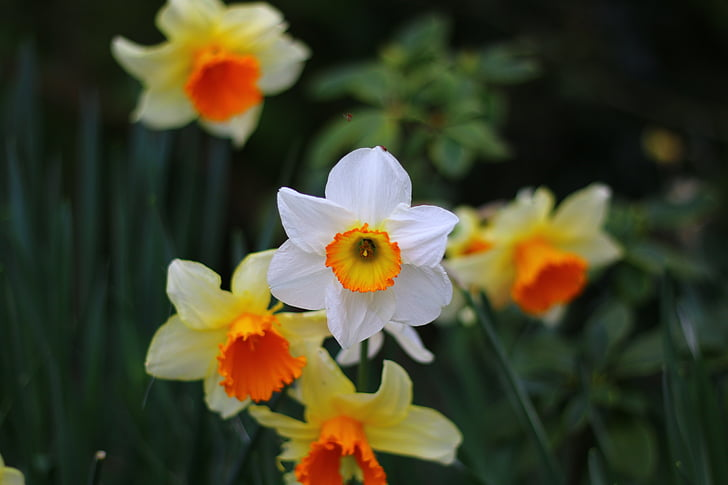Theme of Transitoriness in “To Daffodils”

The main idea in this poem is transitoriness. This means nothing stays forever. Everything in life changes and ends. The daffodils are beautiful, but they live only for a short time. In the same way, people live only for a few years. Life is short and goes away quickly. The poet feels sad about this. He wants us to feel that sadness too.
At the start of the poem, the poet looks at the daffodils. He says they are growing in the morning. But they will die before the day ends. They live for only a short time. He says:
“Fair Daffodils, we weep to see / You haste away so soon.”
These lines talk about how quickly the flowers disappear. They come and then they go. The word “haste” means to move fast. The daffodils do not stay for long. They bloom and then they fade.
The poet also compares the short life of daffodils to the short life of people. He says both are alike. Both are born. Both grow. Both die fast. This makes him think about death and time. He says:
“As yet the early-rising sun / Has not attained his noon.”
This means it is not yet afternoon. But even before the sun reaches its highest point, the daffodils are gone. In the same way, people may die even before they grow old. Life ends before we are ready. The sun here stands for time. It shows how short life can be.
The poet also says that he and the daffodils die together. He feels a deep connection with the flowers. He knows that just like them, he too will leave the world one day. He says:
“We have short time to stay, as you, / We have as short a spring.”
This line says that people also have only a short spring, just like the daffodils. The word “spring” here means the early time of life. It means youth. So, just like flowers bloom in spring and then die, humans are young for a short time and then grow old or die.
Sadness of Passing Time
The poet is sad because nothing stays. The daffodils go away quickly. Youth goes away quickly. Beauty goes away quickly. This passing of time brings pain. The poet weeps to see the flowers go. The daffodils become a picture of life and death.
He uses the daffodils to speak about time. Time does not wait. It moves forward. It does not stop for anyone. The poet sees this in nature and also in human life. Every moment passes fast. People must accept this, even if it makes them sad.
The poem also talks about the seasons. Spring does not last long. It comes and goes. In the same way, good days in life do not stay forever. The poet sees a strong link between nature and human life. What happens to the flower also happens to us.
Beauty and End of Life
Daffodils are bright and beautiful. They bring joy to the eyes. But their beauty lasts for a short time. After that, they fade. The poet finds beauty in their short life too. He respects their quick journey. He knows that their end is part of their beauty.
This poem teaches that life is not always in our hands. We may plan many things, but time is stronger than all plans. Just like we cannot stop flowers from fading, we cannot stop life from moving. We cannot stop death. The poem reminds us to feel the value of time.
The poet is not angry at the flowers or at life. But he feels the sadness of good things ending. He sees the daffodils and thinks about his own life. He knows he cannot stay forever. This makes him feel close to the flowers.
Connection Between Nature and Human Life
The poem creates a bond between nature and people. The daffodils are not just flowers. They are like friends. The poet cries for them. He feels their short life as if it were his own. This makes the poem deep and gentle.
The poet speaks in a kind and soft voice. He does not use strong or hard words. His tone is quiet and thoughtful. He does not want to teach a lesson. He only wants to share a feeling. That feeling is the sadness of time passing fast.
By speaking to the flowers, the poet speaks to us too. He wants us to see that our life is also like that of the daffodils. It is brief. It is bright. And then it is gone. So we must be kind and humble while we are here.
Conclusion
“To Daffodils” is a poem that speaks with love and sorrow. It tells us that nothing lasts. Time moves on. Life is short. Flowers bloom and fade. People grow and die. The poet uses the daffodils to help us understand this. He says we live only a little while. Our spring is short. Our time is not long.
Three lines from the poem help us understand this:
- “Fair Daffodils, we weep to see / You haste away so soon.”
- “As yet the early-rising sun / Has not attained his noon.”
- “We have short time to stay, as you, / We have as short a spring.”
These lines bring the whole meaning of the poem. The poem tells us to see the beauty in life. But it also asks us to remember that this beauty will not last. This is the truth of time. This is the truth of life.
 CSP
CSP